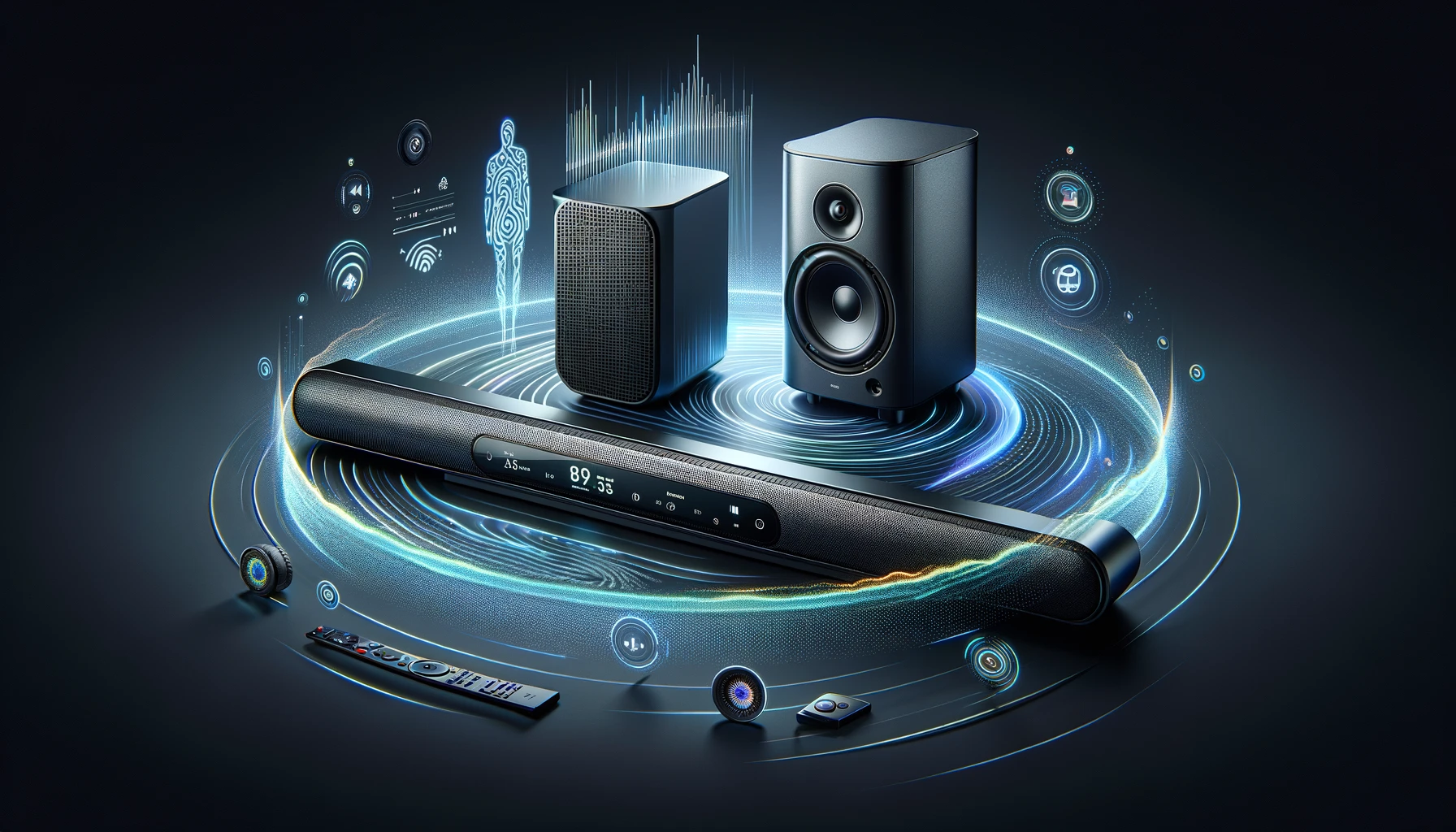Do you want louder, deeper bass from your Vizio soundbar home theater without running more wires?
Adding a wireless subwoofer conveniently expands low-end power, but compatibility factors beyond branding determine which models optimize performance together rather than muddle it.
Let’s dive into key considerations around connectivity, amplification, and specification matching that reveal ideal wireless subwoofer pairings for Vizio soundbar owners seeking more kick without cables.
Are all wireless subwoofers compatible with Vizio soundbars?
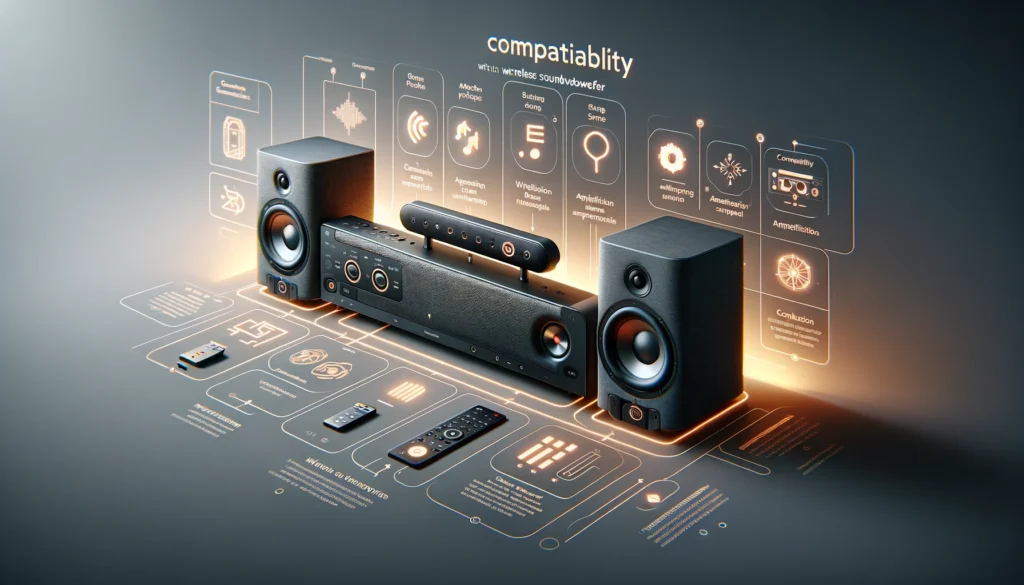
The short answer is no.
Seamless integration requires matching key connectivity protocols, amplification schemes, and format support capacities between components avoiding performance shortcomings.
We’ll explore specifics below revealing ideal pairings for Vizio owners seeking more kick from theaters without cables.
Connectivity Method Factors
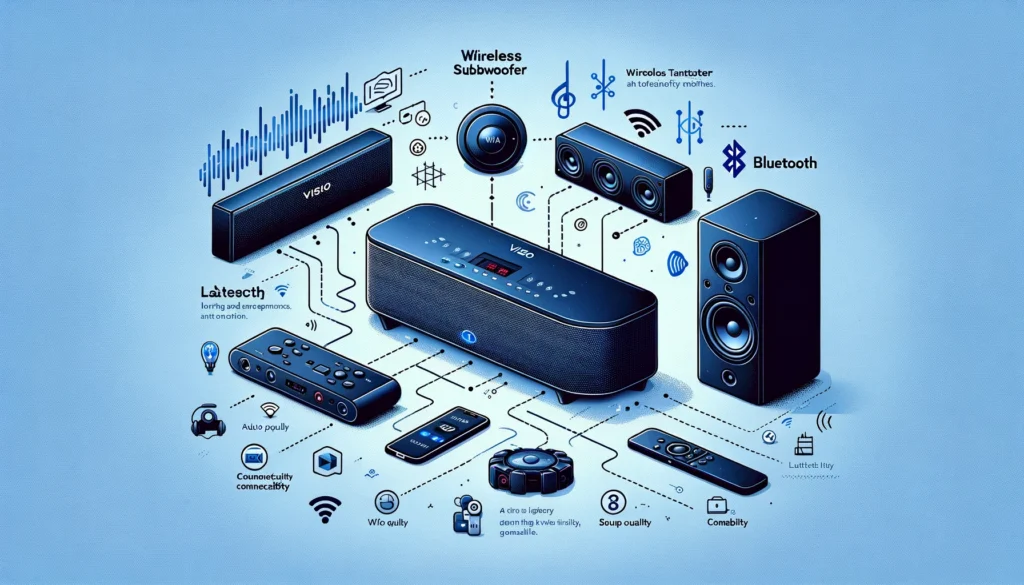
The foremost compatibility consideration when adding any external wireless subwoofer to an existing Vizio soundbar system involves the connectivity method used to facilitate communication between the two components.
Most solutions today leverage either proprietary wireless signal protocols or standard Bluetooth technology.
Vizio’s own branded wireless subwoofer modules typically utilize WiSA transmitter/receiver standards.
Allowing low latency transmission of full resolution audio alongside key soundbar feature and system control data like volume, EQ profiles and playback management extending beyond just raw sound.
Some third party subwoofers alternatively feature Bluetooth connectivity for more universal device pairing flexibility.
However, Bluetooth caps maximum audio resolution transmitted resulting in compressed frequency cutoffs and also introduces higher latency lag times given heavier wireless signal processing requirements.
Interference risks also escalate in congested wireless environments.
So while proprietary Vizio transmitters like WiSA optimize performance and synchronization integrating subs seamlessly like native components.
Traditional Bluetooth subs counter with wider compatibility reaching across brands albeit with subtle sound degradation disadvantages. Just weigh priorities appropriately.
Soundbar Audio Format Considerations
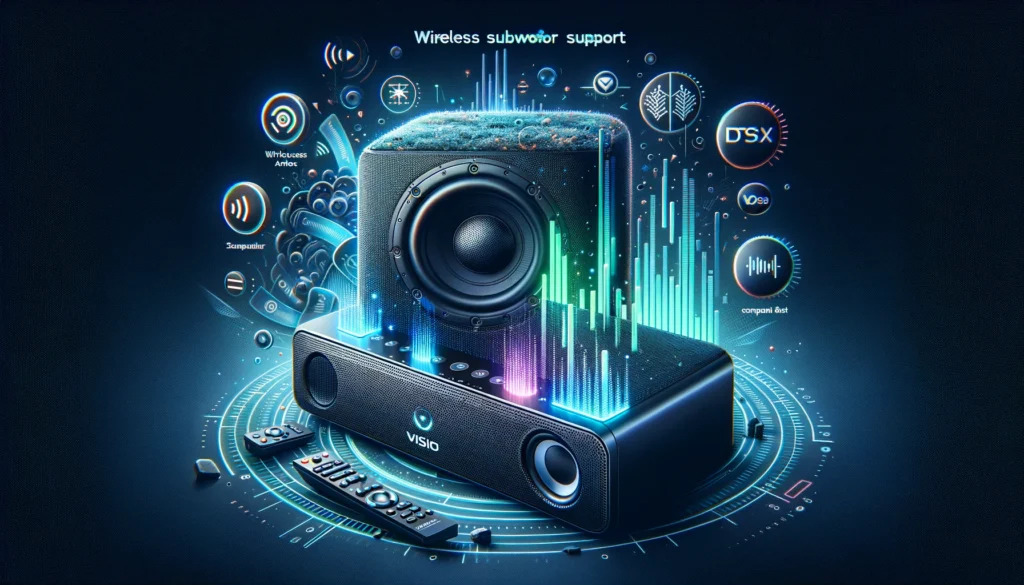
Another wireless subwoofer compatibility consideration beyond just the base connectivity technology itself also revolves around the degree of home theater audio format support featured in the main Vizio soundbar system purchased.
Certain surround sound configurations gain tangible benefit having that auxiliary low frequency channel.
Specifically, soundbars incorporating Dolby Atmos and DTS:X playback with height/spatial channels produce more encapsulating 3D bubble effects thanks to unconstrained low-end channel independence.
The .1 LFE channel gets freed from bass management processing can extend dramatically deeper enhancing reality.
Moreover, even basic 5.1 and 7.1 surround sound presentations receive a clearer midrange focus across remaining satellite speakers.
Without deep bass frequency content bloating channel separations when outsourced to dedicated compact wireless subwoofer modules instead.
So while elemental 2.0 stereo presentations certainly gain traditional sonic boosts integrating any sub.
Identifying clearance for more advanced multichannel processing helps maximize wireless subwoofer utility particularly found in higher-end Vizio soundbar solutions. Factor where added low-end presence best aids formats.
Integrated Amplification Benefits

Most wireless subwoofers compatible with Vizio sound systems feature built-in amplification to power and control cone excursion levels.
Rather than relying on passive crossovers being fed signal from main soundbar amp channels the way traditional wired subwoofer outputs provide connectivity.
This self-amplified architecture allows wireless sub modules their own performing domains operating independent of the core soundbar processing, with granular volume, phase.
Trim distance and even auto room correction tweaks managed locally inside subwoofer cabinets only for that focused low-end task facing varying room boundary interaction anomalies.
The dividends manifest more uniform bass impact reaching key seating positions without strange cancellations or resonances arising.
Which external sub controls couldn’t ameliorate chained to soundbar-wide preamp staging stripping away response tuning liberties needed. Let integrated wireless sub amps govern output for best coupling results.
Manual Compatibility Verification

Given connectivity method variances both proprietary and Bluetooth, Dolby/DTS format considerations needing verification that added wireless subwoofer support enhances rather than muddies or misses channel effects.
And integrated amplification factors covered – manually confirming baseline compatibility between prospective wireless subwoofer models and current Vizio soundbar systems makes prudent sense.
Referencing technical specification breakdowns noted in user manuals for both the soundbar itself alongside wireless sub candidates being considered will highlight HDMI port profiles.
Audio codec support declarations, wireless transmitter particulars – revealing ideal pairings optimized for home theater duties based on technical playback pipelines.
Likewise, some brands maintain cross reference charts explicitly listing blessed soundbar and sub groupings confirmed to harmonize during testing.
Search for your soundbar model among listed complementary subwoofers known to operate smoothly without performance limitations if more assurances wanted. Consider those bundles preset.
Wireless Subwoofer Setup Tips

Once appropriate Vizio soundbar and wireless subwoofer pairing gets established through connectivity method analysis and feature capability verification as covered in previous sections – proper physical setup also determines experience quality.
Positioning, room correction tweaks and bass management settings play roles.
As compact standalone modules, wireless sub placement need not flank front left/right speakers the way wired subwoofers often land constrained by cable runs.
Instead, tuck rear corner or midpoint wall positioning can greatly aid louder perceived output and room mode mitigation given boundary reinforcement.
Likewise, running auto room equalization functions found on many wireless subs quantifies local influence from structural standing waves and furnishings to tame muddy boom and thin nulls accordingly at the listening position.
This optimization freedom gets restricted when sub controls chain to soundbars only via wired connectivity.
Just be sure to adjust associated bass management options like LPF/HPF crossover points on the main soundbar system accordingly so low-end signals.
Properly steer everything below 80/100/120Hz over to the wireless sub instead of the soundbar woofers trying to resolve vibrations they weren’t built to handle smoothly.
Expanding Audio Impact Reasonably
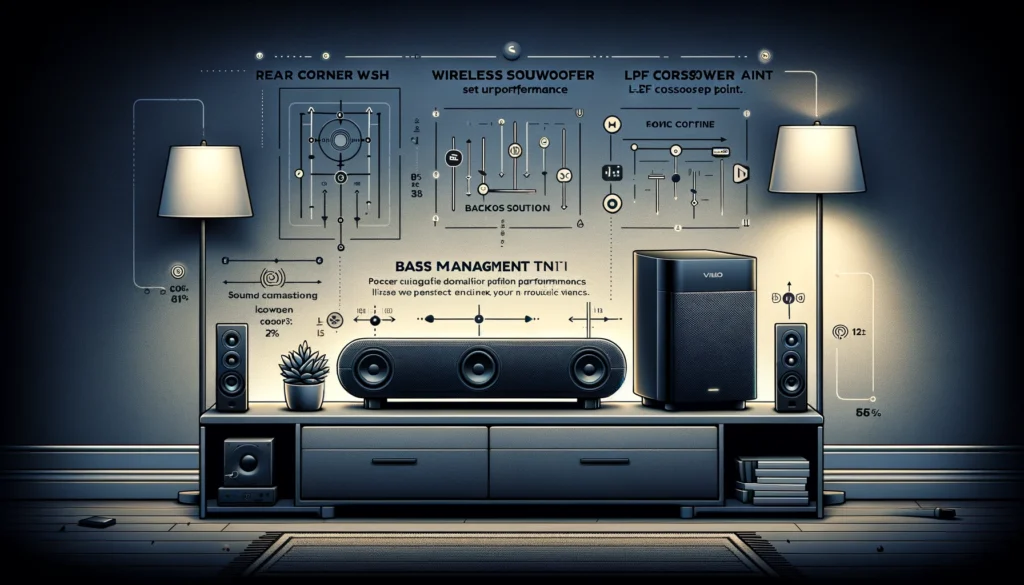
Final verdict on wireless subwoofer and Vizio soundbar compatibility inevitability also requests perspective on prudent system expansion guidelines as the low-end.
Immediacy provided by compact sub modules encourages owners to purchase multiples for stacking added bass pressure. However restraint still rules here for home theaters.
Including two wireless subwoofers helps smooth out resonances from less-optimal room dimensions that might exaggerate particular frequencies too extremely from just one single sub location.
Bass gaps get filled better having pairs spread across front or rear walls. But more than a pair pressurizes small spaces too greatly upsetting accuracy.
Likewise, integrating twin subs too close together also generates risky localized amplification of shared room modes better distributed into corners away from walls for smoothest aggregation.
Just ensure levels match using calibration tools avoiding wild imbalance destroying headroom. Adding bass always requires deliberation optimizing characteristics of spaces themselves.
Conclusion
In conclusion, not all wireless subwoofers seamlessly integrate with all Vizio soundbar models.
Carefully evaluating connectivity methods, audio format support capacities, integrated amplification benefits, and manual specification matching determines ideal pairings avoiding performance shortcomings.
When properly matched, wireless subwoofers synergize wonderfully with Vizio soundbars expanding audio impact through added low-end presence and flexibility – just vet combinations thoroughly ensuring formats get enhanced rather than hindered.
